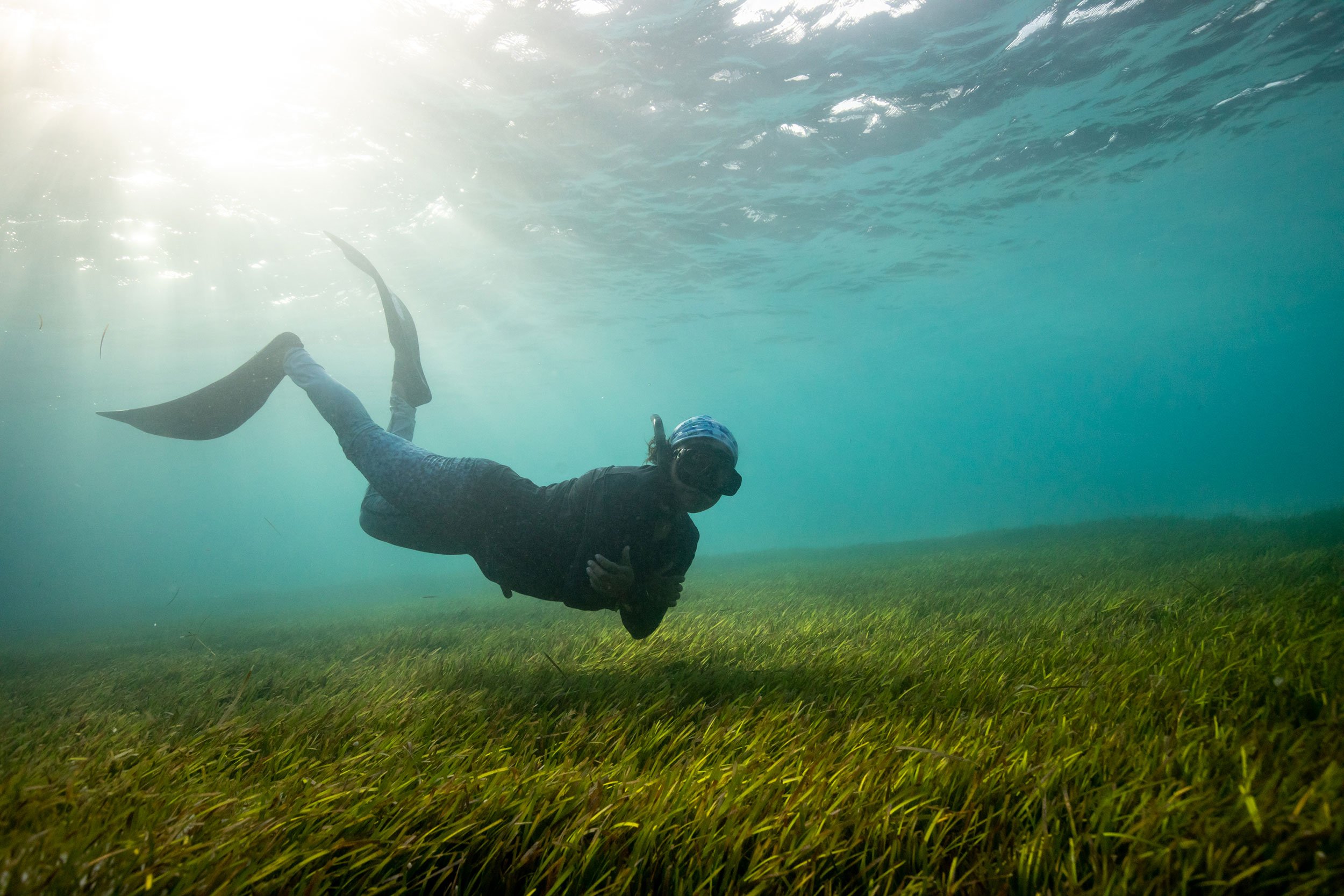Historic Discovery of the World’s Largest Seagrass Bed In the Bahamas
A huge discovery for science.
At the end of 2022, a new study using tiger sharks (Galeocerdo cuvier) helped researchers to discover the world’s biggest seagrass meadow, extending the total known global seagrass coverage by more than 40%.
If you have ever been lucky enough to get up close and personal with tiger sharks, you know they are notoriously fierce.
Previous research carried out in the Bahamas confirmed that at least 2,250 square kilometres of seagrass stretched across the banks, but researchers knew that there was more out there, they just didn’t know how to measure it.
In an attempt to measure seagrass coverage in the Bahamas, researchers attached cameras and trackers to the dorsal fins of tiger sharks, in the hope these apex predators could give them access to hours of ocean floor footage, and it did.
All thanks to the tiger sharks in the Bahamas, researchers reported a 41% increase in seagrass coverage, revealing what researchers say is the world’s largest known seagrass ecosystem in the oceans.
Why Use Tiger Sharks?
Tiger sharks are not only fierce predators and flinch at pretty much nothing (even hurricanes don’t seem to phase them), but they are highly mobile marine creatures that can reach significant depths, have a large range, and are known to spend a long time ‘hanging out’ in seagrass meadows.
Tiger sharks are also not too bothered by mundane human activities, which meant that researchers could fix camera packages, equipped with satellite and radio tags, to seven tiger sharks in the area.
They used circle hook drumlines to catch the tiger sharks, as this is the safest way to catch tiger sharks, causing no long-term damage. Once caught, the team took no longer than 10 minutes to attach bright orange cameras tied with biodegradable cable ties. After approximately six hours, the dissolvable time-release swivel corroded and floated to the surface, where scientists could collect the data.
Why Are Seagrasses Important?
Seagrasses are critical nurseries, and breeding and feeding grounds for a wide range of marine species. Not only do seagrass beds support commercial fisheries, but they also provide a buffer against coastal erosion, protecting coral reefs and intertidal ecosystems.
Seagrass ecosystems are also a significant source of “blue carbon”, trapping and storing large amounts of carbon, therefore, making seagrass communities an important tool in mitigating the climate crisis.
Sadly, seagrasses are threatened by many factors such as boating, shipping, dredging, mining, coastal development, and increasing extreme weather conditions. To put it into perspective, since 1930, around 7% of seagrasses are disappearing globally every year. This is faster than any other coastal ecosystem on Earth.
Researchers in the Bahamas hope that their discovery will mean that better protections for seagrass ecosystems can be made not only in the Bahamas, but also worldwide.
This research is also a constant reminder to ourselves that we are far from having explored the oceans, and not just the great depths, but also shallow waters.










